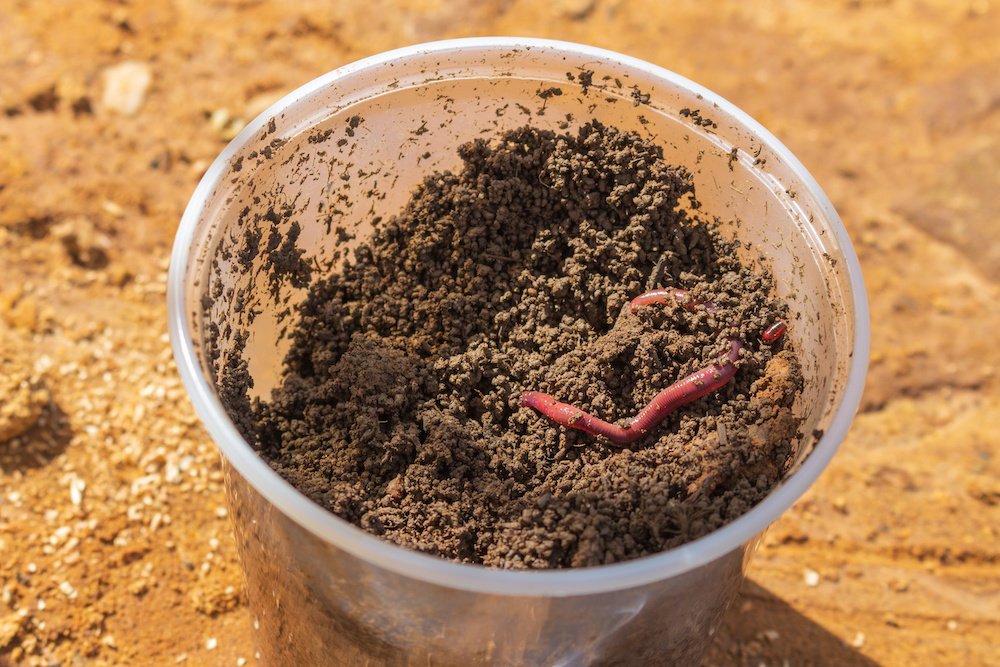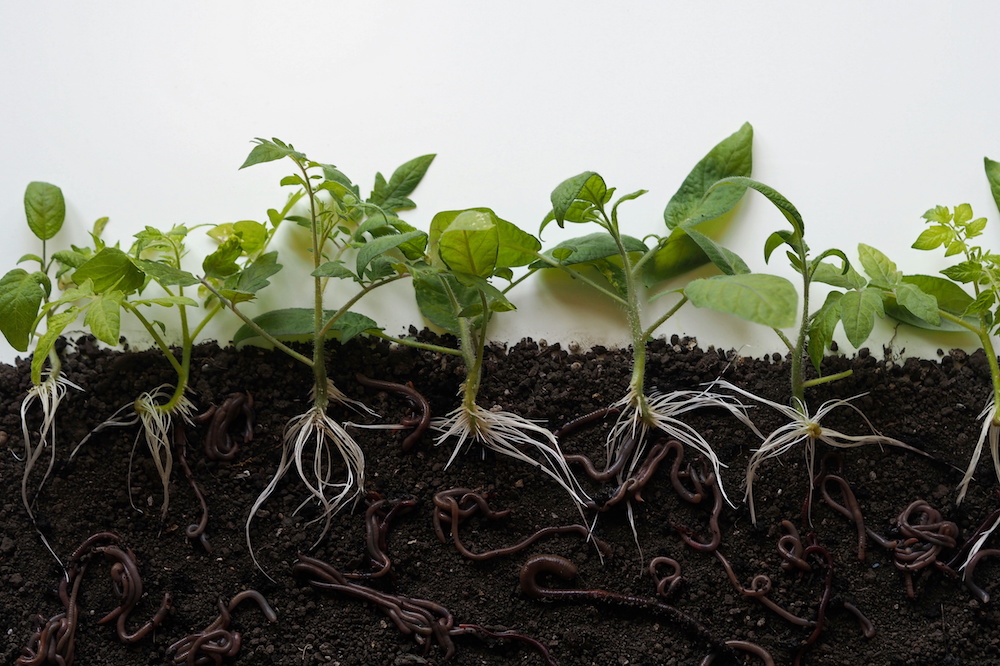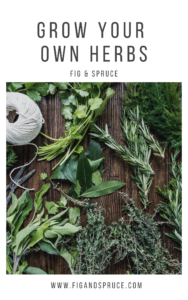Earthworms in container gardening are something to consider to improve the quality of your soil and plants.
It’s well known that worm castings are a popular option for nourishing soil, but what about worms themselves?
Regular earthworms, also known as red worms, can easily be added to your containers for several reasons.
Table of Contents
What Do Worms Do for Container Gardening?
As simple as they seem to be, earthworms put a lot of effort into perfecting the quality of your soil.
Adding them to your containers for gardening can help improve aeration while also nourishing your plants.
Let’s take a look at some of the most commonly experienced benefits you could encounter using worms.
Aeration
By far, the most notable advantage of having earthworms in your soil is to help improve oxygen levels.
When you add worms to the soil, they begin digging through it and creating small tunnels that inevitably air in.
When air enters the soil, it’s absorbed into the channels and directed to your plant’s roots.
With optimal oxygenation of your soil, you’ll find it’s easier for your plants to retain higher quantities of nutrients.
The more nutrients your plants consume, the heartier they become and the healthier they’ll be.
Overall, this benefit can turn into higher yields as well as generally healthier plants for prolonged periods.
Nutrient Breakdown
Another significant benefit of adding earthworms in containers for gardening is the nutrient breakdown.
As with any living thing, worms require food to nourish their bodies, grow, and survive.
When you add them to the soil, they consume the organic matter within the dirt, resulting in them producing waste.
However, worm waste is one of the most valuable elements for gardening, transforming soil into compacted gold.
As the worm waste travels through the soil, it puts organic matter back into the material, which will assist with plant development.
Like we mentioned, with aeration, the more nutrients your plants absorb, the healthier and heartier they’ll become.
Nutrient Dispersal
It’s easy to see how earthworms can add nutrients to your soil, but did you also know they make the nutrients travel further?
Worms tend to dig deep into the soil that creates channels, allowing air to reach the bottom layers.
Also, as they move and produce waste, their organic material reaches deeper depths, which is even better.
Remember that the most important part of your plant is its roots, as it is where the nutrients get absorbed.
As your worms make their way to the bottom layers of soil, nutrients reach areas they would otherwise miss.
This efficiency is what makes earthworms a distinctive contribution to edible and non-edible plant species.
What Types of Worms Do You Use for Container Gardening?
The most common type of worm that gardeners use is red worms, also known as earthworms.
Still, there are a few specific species that you can consider, each with its own benefits and disadvantages.
Two of the best alternative or additional worms to consider are the following:
Red Wigglers
Red wigglers are some of the most easily sourced worms that you can add to your plants.
Scientifically, their names are Eisenia foetida and are a functional addition to composting bins.
This species of worm enjoys digging through topsoil layers, significantly improving aeration with natural movements.
You’ll find red wigglers thrive best in warm and wet environments, making them ideal for spring and summer.
This reason is also why they’re most often used for composting, where heat is a significant contributor.
Another essential feature of this species is that they’re vegetarian.
As vegetarians, they can only consume organic matter like garden waste, leaves, and specific kitchen scraps.
Also, they have a shorter lifespan than some other worm varieties.
Pros:
- Easily digest organic materials
- Offer adequate aeration
- Thrive well in container environments
- Prevent soil compaction
Cons:
- Shorter lifespan
- Easily overpopulated
Night Crawlers
Another option for choosing a worm species for your garden is the night crawlers.
Red European night crawlers are a great variation adaptable to the outdoors and thrive in fertilized gardens.
You’ll often find these worms are used to help aerate lawns and gardens, making them ideal for container gardening.
Another benefit of this variety is that they work pretty well in composting, where red wigglers might not.
Night crawlers quickly adapt to extreme temperatures, which is notable for indoor and outdoor gardens.
You’ll find their body size is slightly larger, typically ranging between four and five inches, and they’re very active.
If soil aeration is something you’ve been struggling with, this species will quickly become your best friend.
Since they are so active, they create many fantastic tunnels buried significantly deeper than red wigglers go.
You’ll also find that they distribute their own fertilizer through the tunnels, similar to other worm varieties.
If you’re an angling enthusiast, you’ve likely heard of night crawlers in the past.
They’re often used for fishing, which is another way to put them to good use.
Since they’re known for their ability to breed quickly, you can easily acquire a collection of valuable worms.
Pros:
- Versatile use
- Resistant to extreme temperatures
- Highly active
- Great for deeper aeration
Con:
- Overpopulate easily

Tips for Using Earthworms for Container Gardening
Adding earthworms to your containers for gardening seems like a straightforward job, and it usually is.
However, it’s essential to ensure the environment your worms get exposed to is ideal for their needs.
Otherwise, you could experience your worms dying faster than they’re able to offer any nutritional benefits.
Tip #1: Manage Soil Temperature
The most important thing to note with any worm variety is that you must manage soil temperature.
This point is crucial for red wigglers since they’re not as resistant to heat as night crawlers.
Ensuring you water your plants is a great way to manage soil temperature, as is placement.
Containers tend to retain more heat than open gardens, making this task a little more challenging.
Also, you must keep an eye on the amount of water you’re adding because too much could cause the worms to drown.
Ideally, you’ll want to maintain a cool and damp environment for your worms to thrive.
Tip #2: Control Worm Populations
Worms are known for their ability to overpopulate, especially when unmanaged.
Although they are an efficient and organic way of maintaining your garden, they also need to be watched.
If you have too many worms in a single container, they’ll struggle for resources and space.
This stress can cause your worm population to die out entirely, not to mention it’s not humane.
You shouldn’t add too many worms to each container to prevent hostility and stress.
Our recommendation is to start with a few worms to see how they populate and remove excess worms as needed.
Tip #3: Choose the Right Containers
Not only is container size important for your plants, but your worms as well.
Find containers that are the right size for all of your worms to cohabitate with limited supervision.
The ideal container size for worm gardening is about one gallon or larger.
This size should give them plenty of space to move around and dig tunnels without interfering with one another.
Also, it’ll be easier for you to manage if you end up having to remove excess worms from the container.
Tip #4: Loosen the Soil and Add Drainage
Before you begin adding your worms to your garden, ensure the soil conditions are optimal.
As mentioned, red wigglers don’t dig as deep as other worm varieties, so you should loosen the topsoil.
The primary objective of the worms is digging beneath a layer to get out of the sun.
If the soil is too compacted, it will take too much effort to find a comfortable nesting place.
With the top layer broken apart, they’ll be more likely to survive over prolonged periods.
A second thing to consider is to ensure your containers have optimal drainage to prevent your worms from drowning.
Although worms love moisture, they’re not adept at swimming, nor do they survive underwater.
You must ensure that any excess moisture gets removed quickly from the soil to improve productivity.
Earthworms in Container Gardening: Final Thoughts
Adding earthworms in container gardening is a fabulous way to improve the quality of your plants.
With their natural fertilization and aeration, it’s a hands-free way to promote your plant’s health.
Whether using red wigglers or night crawlers, ensure their environment is perfect so they can get to work.

